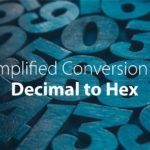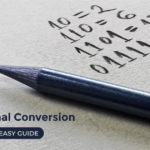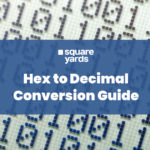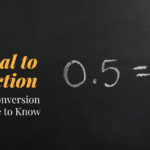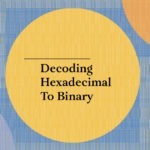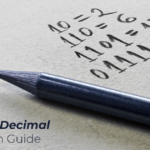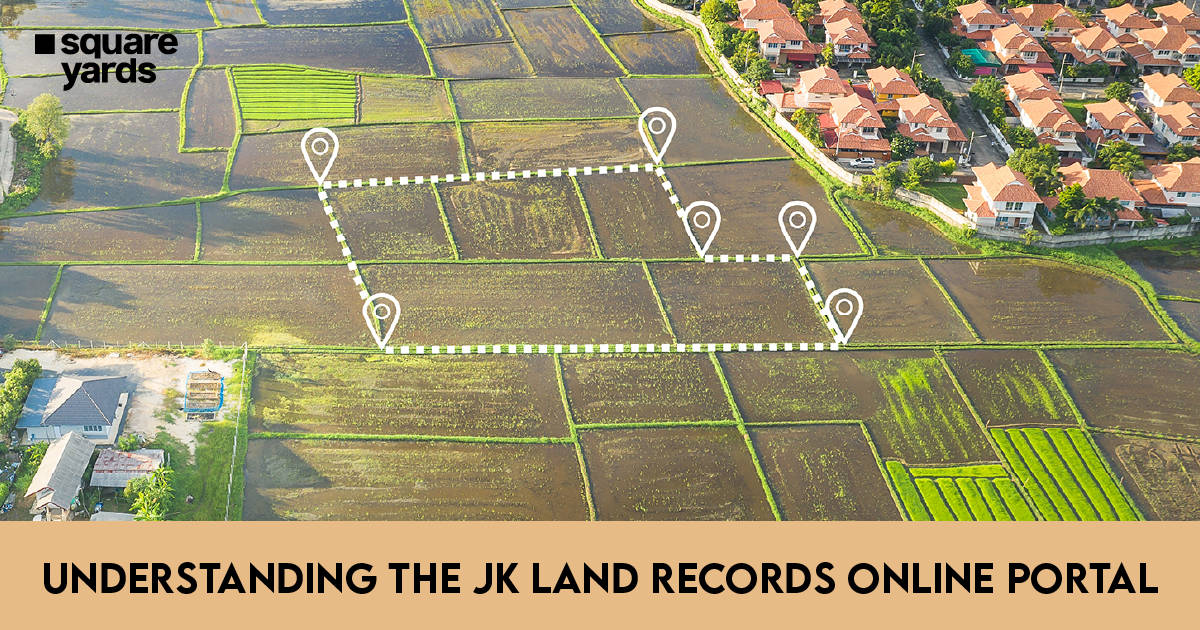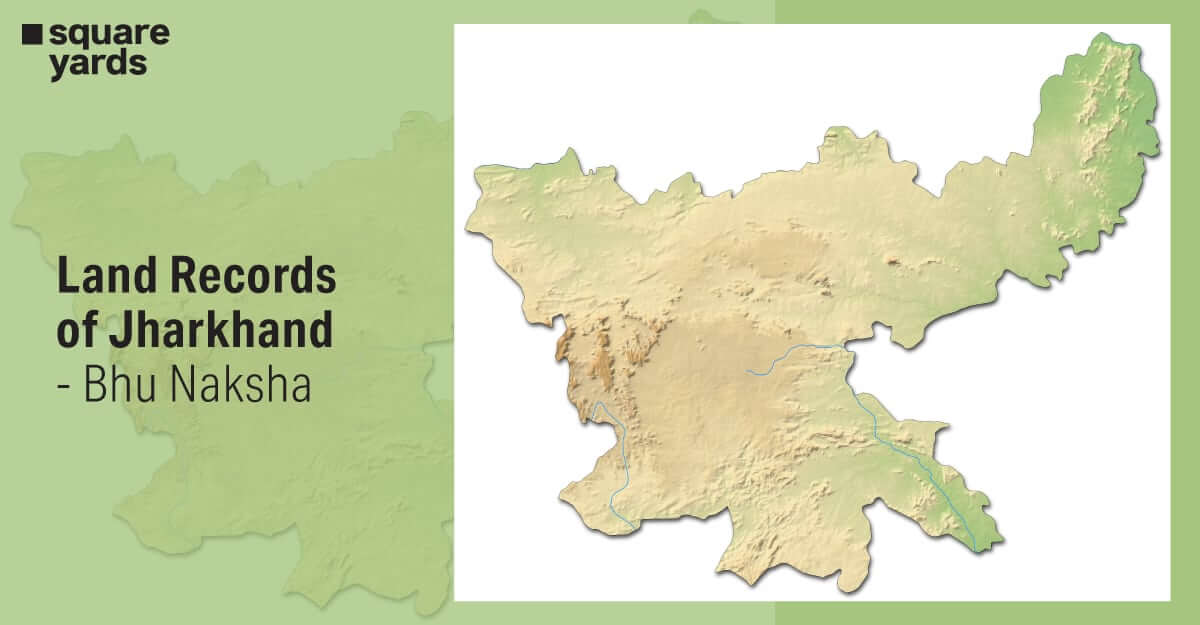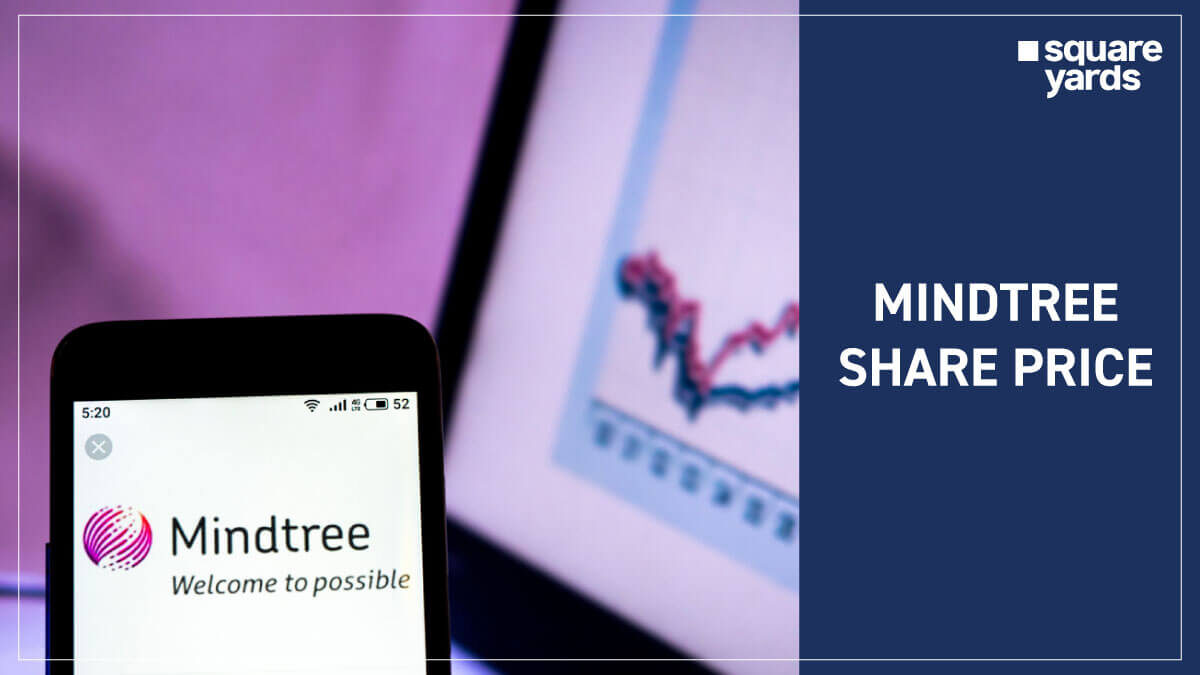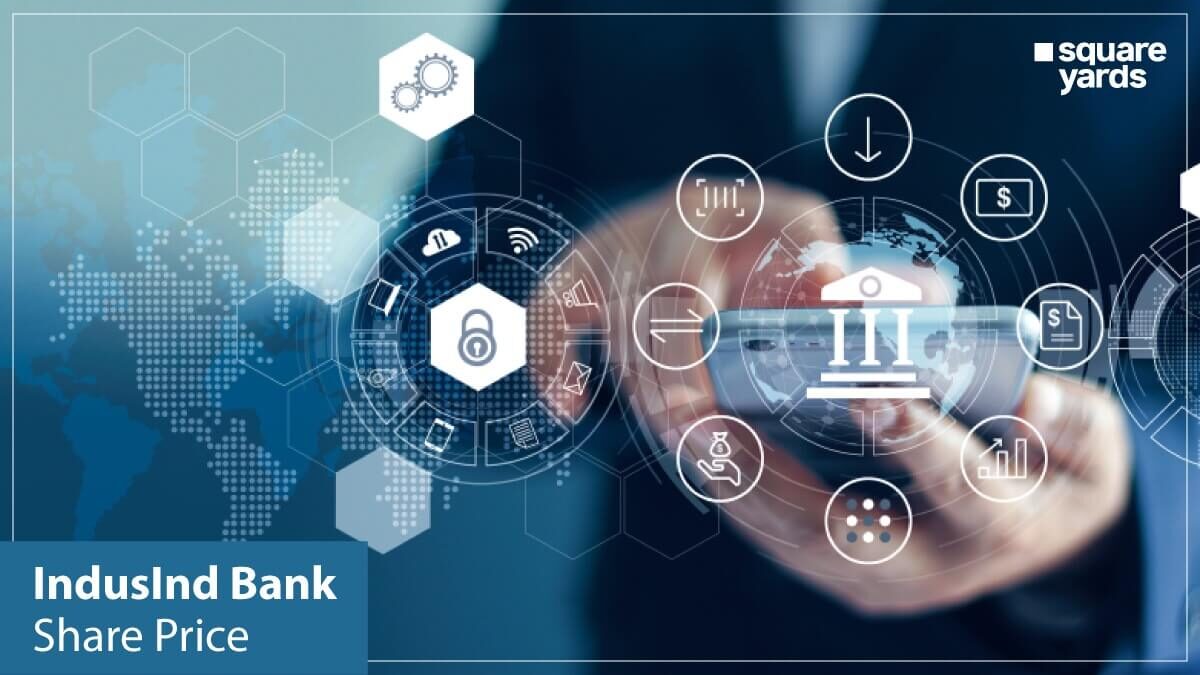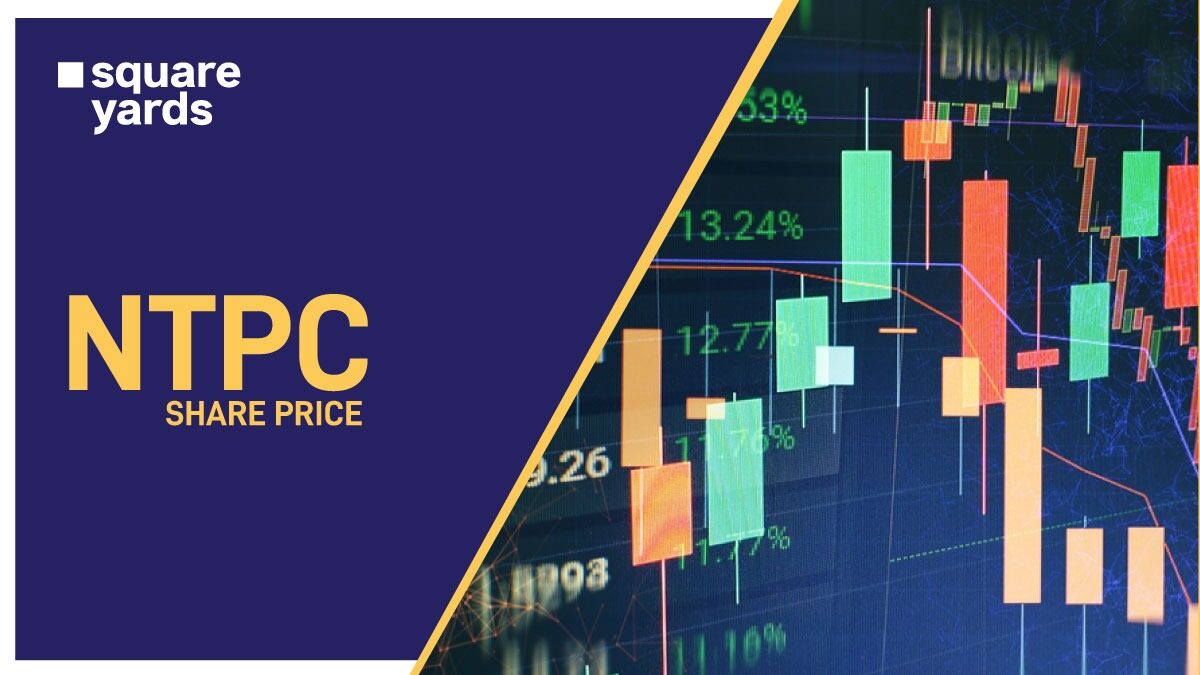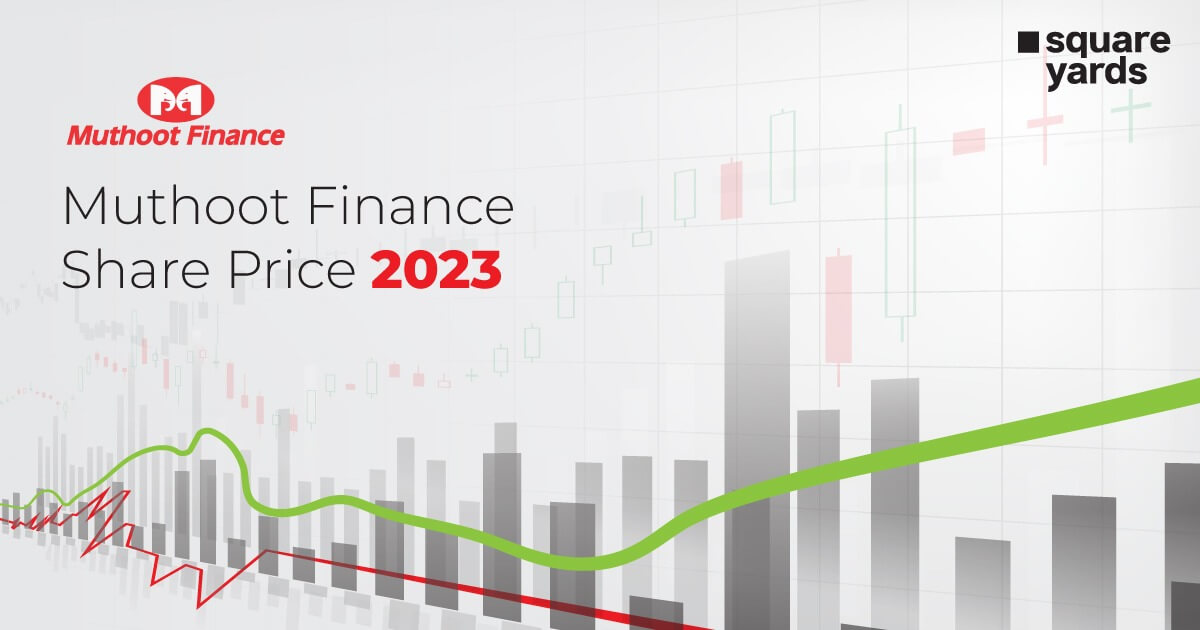Have you ever wondered about the different worlds of numbers and their meanings? Yes, there is one way to interpret a number and we are going to uncover two types of formations today. From decimal to binary, we are about to cover definitions, history, use and of course how to convert a decimal number into a binary one, so let’s 01100010 00100000 or begin!
Table of contents
What is decimal?
Decimals are a way of writing numbers that aren’t whole. We use digits like 0 to 9 and a dot called the decimal point. Decimals are useful in everyday life for measuring money, fractions, and percentages. They help us express values accurately and solve problems. Understanding decimals is like having a secret language of numbers that helps us in different fields like science and finance. Decimals make numbers more precise and help us make sense of the world.
For instance, if you want to numerically write two and a half, then you can use the decimal point and add the half after the decimal number like “2.5”.
Current Use of Decimal
Decimals are used in finance to represent money, exchange rates, and interest rates with accuracy. In science and measurements, decimals help us measure things like length, weight, and temperature precisely. Decimals are also crucial in data analysis and statistics, where they help us interpret numerical data and calculate statistical measures. Additionally, decimals are widely used in technology, engineering, and computer programming to ensure accurate calculations and proper representation of data.
Decimals have a significant impact on the real estate industry. They are used for accurate pricing of properties, measuring their size and dimensions, calculating mortgage payments and interest rates, determining rental rates, evaluating property values, and representing commission and fees. In short, decimals ensure precise and reliable calculations in real estate!
History of Decimal
The history of decimals dates back to ancient civilisations, where different cultures independently developed their own decimal numbering systems. One of the earliest recorded instances of such a system can be found in ancient Mesopotamia around 2000 BCE. The Babylonians used a sexagesimal system based on the number 60, which involved the use of place value notation.
The decimal system, which is based on the number 10 and is familiar to us today, originated in ancient India. In the 7th century CE, the Indian mathematician Brahmagupta introduced the decimal system. He explained the use of zero as a placeholder and the positional notation system, where the value of a digit depends on its position in the number.
Through trade and cultural exchange, the decimal system gained popularity and spread to other regions. In the 9th century, the Islamic mathematician Al-Khwarizmi further developed the decimal system and introduced it to the Western world. His work, along with translations and advancements by other scholars, greatly influenced the development of mathematics and decimal notation in Europe.
During the Renaissance, decimal notation became widely accepted in Europe. Mathematicians like Leonardo of Pisa (Fibonacci) and Simon Stevin played significant roles in promoting the use of decimal fractions. This advancement made calculations and measurements more efficient and accurate. In the 17th century, the mathematician John Napier introduced logarithms, which enabled complex calculations using decimal numbers. This invention had a profound impact on scientific and mathematical progress.
The standardisation of the decimal system occurred with the establishment of the International System of Units (SI) in the 18th and 19th centuries. The metric system, based on powers of ten, replaced various local measurement systems and brought uniformity to measurements worldwide.
What is Binary?
Binary numbers are a numerical system that uses only two digits, 0 and 1. It is a base-2 system, unlike the decimal system that uses a base-10. In binary, each digit represents a power of 2, starting from the rightmost digit. The rightmost digit represents 2^0 (which equals 1), the next digit represents 2^1 (which equals 2), the next represents 2^2 (which equals 4), and so on.
Binary numbers are written by combining these digits, where each digit’s value is multiplied by its corresponding power of 2. For example, the binary number 1010 represents the sum of (1 * 2^3) + (0 * 2^2) + (1 * 2^1) + (0 * 2^0). This simplifies to 8 + 0 + 2 + 0, resulting in the decimal value 10.
Current Use of Binary
While binary numbers may not be directly involved in the traditional aspects of real estate transactions, their underlying presence in technology and data management systems helps streamline operations, improve efficiency, and enable effective communication and information sharing within the real estate industry.
For example, when you search for properties on a real estate website or access information in a real estate database, the data is stored and transmitted in binary format behind the scenes. Computers use binary code to represent and manipulate this data, enabling quick and accurate retrieval of information.
But that’s not all, binary-based technologies such as computer-aided design (CAD) software and 3D modelling tools are used in real estate development and architecture. These technologies assist in creating visual representations of properties, floor plans, and virtual walkthroughs, enhancing the planning and presentation processes.
History of Binary
The history of binary is closely connected to the development of computing and information theory. The binary system, which uses only two digits, 0 and 1, has become the fundamental language of computers and digital technology.
The concept of binary numbers can be traced back to ancient civilizations, including ancient Egypt, where a binary-like representation of fractions was used. However, the systematic use of binary notation emerged later.
In the 17th century, the German mathematician and philosopher Gottfried Wilhelm Leibniz laid the groundwork for the modern binary system. He recognized the simplicity of a system using only two symbols to represent numbers and sought a universal language of thought.
Binary arithmetic gained prominence in the 19th century with the rise of telegraphy. The binary system was ideal for representing telegraphic signals as on/off electrical impulses, enabling reliable and efficient data transmission.
The true revolution in binary came with the advent of electronic computers in the mid-20th century. Binary logic formed the basis of these machines, and binary digits (bits) were used for all calculations and data storage. This breakthrough paved the way for modern computing.
Another significant development in binary history is the use of binary code to represent characters. In the mid-20th century, Claude Shannon and his colleagues developed binary encoding schemes, such as ASCII, which assigned unique binary codes to represent characters. This standardised character encoding and facilitated the exchange of information between different computer systems.
Since then, binary has remained crucial in digital technology. It is the foundation of computer programming languages, data storage systems, and communication protocols. The simplicity and compatibility of the binary system with electronic devices have made it an essential tool in the digital age.
Relationship Between Decimal and Binary
Decimal to binary formulas are two different ways of representing numbers. Decimal is what we use in our daily lives, with digits ranging from 0 to 9. Binary, on the other hand, is a system used in computers, using only 0s and 1s. However, you can convert decimal to binary and visa-versa.
How to Convert Decimal to Binary?
Converting a decimal to binary is a simple process. Start with the decimal number you want to convert. Divide it by 2 and write down the remainder (0 or 1) as the rightmost digit in the binary representation. Repeat this step by dividing the quotient obtained in the previous step by 2 and writing down the remainder as digits from right to left until the quotient becomes zero. Read the sequence of remainders from the last one obtained (the leftmost digit) to the first one (the rightmost digit) to obtain the binary epresentation. Add leading zeros if necessary to maintain the desired number of digits. For example, to convert the decimal number 25 to binary, divide it by 2 to get the remainder of 1. Repeat the process until the quotient becomes zero, and you get the binary representation 11001. By following these steps, you can easily convert any decimal to binary.
If conversion is not your cup of tea, then you can always use decimal to binary calculator online to convert your numbers in seconds.
Don’t miss It!
| Kilometer to Centimeter | Kilometer to Centimeter Conversion: Conversion Table, Examples |
| Centimeter to Meter | How to Convert Centimeter to Meter: Formula & Examples |
| Cubic Meter to Liter | How to Convert Cubic Meter to Liter: Formula & Examples |
| Cent to Square Feet | How to Convert Cent to Square Feet: Formula & Examples |
| Pounds to Kilogram | How to Convert Pounds to Kilogram: Formula & Examples |
| Milligrams to Grams | How to Convert Milligramsto Grams: Formula & Examples |
| Yard to Feet | How to Convert Yard to Feet Formula & Examples |
| Grams to Ounces | How to Convert Grams to Ounces: Formula & Examples |
Formula and Examples on Decimal to Binary Conversion
Converting a decimal number to binary is a straightforward process that involves a few simple steps. First, pick the number you want to convert and divide it by 2. Take note of the quotient and the remainder, the remainder will be either 0 or 1. For example, if 25 is divided by 2, the quotient is 12 and the remainder is 1.
Now, write down the remainder you obtained, this first remainder will be the rightmost digit of the binary representation. Now, repeat the process by dividing the quotient by 2. Repeat this process until the quotient becomes 0.
Finally, write down the sequence of remainders in reverse order. The last remainder you got will be the leftmost digit in the binary representation, and the first one will be at the rightmost digit). By following these steps, you can convert the 25 decimal to binary 11001.
Decimal to Binary Conversion Table
You can take the reference from the below table to understand decimal to binary converter system
| Decimal Number | Binary Number |
| 0 | 0 |
| 1 | 1 |
| 2 | 10 |
| 3 | 11 |
| 4 | 100 |
| 5 | 101 |
| 6 | 110 |
| 7 | 111 |
| 8 | 1000 |
| 9 | 1001 |
| 10 | 1010 |
Difference Between Decimal and Binary
The main difference between decimal and binary lies in the base they use and the number of digits available. Decimal is a base-10 numbering system that we commonly use in everyday life. Whereas, binary is a base-2 system used in computing and digital technology.
FAQ’s about Decimal to Binary
Q1. What is 0.75 decimal in binary?
0.75 decimal in binary is 0.11
Q2. How do you convert 0.125 to binary?
0.125 decimal in binary is 0.001
Q3. What is the decimal 10101101 in binary?
173 if the decimal for the binary number 10101101






